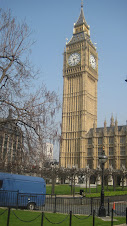The word “farne” means “island” in some now unspoken language. Lindesfarne is one of a series of small islands off the coast of England just below the Scottish border. In fact, during the many border wars before England and Scotland were united under the rule of King James these islands were alternately owned by both countries. Today they’re considered out of the way, but back in the old shipping days, they were far more traveled and Lindesfarne in particular was on the trade route.
Lindesfarne has an important role in the history of Christianity in England. What we know of this time was written by the Venerable Bede in the early 700’s. Of his history, some is clearly reliable, some is clearly entertaining and much lies vaguely in the middle, unsubstantiated by other sources. He tells us that King Oswald invited the monks from Iona on the west coast of England, where he had been converted and was a student, to send a missionary team to his kingdom on the east coast. The first monk chosen was not successful, but the next one, Aidan, turned out to be uniquely suited for this mission and it thrived. Oswald gave him choice of any land in his kingdom to build a priory and he chose the uninhabited Lindesfarne. The year was 634 AD.
Colorful stories abound of Aidan’s pastoral and missionary successes. The priory grew, the Gospel spread to the British people and all should have been well. Two problems emerged however, the first concerned competing kings fighting over land, and the other concerned competing forms of Christianity fighting over followers. Oswald’s successor Oswey , having won and settled the first issue called a council held at Whitby to settle the second. Aidan’s gifts of diplomacy surfaced, but the one who saved the day was Hilda, abbess of Whtiby, recruited by Aidan for that post. Her strength of character brought the sides together and a decision was made. The issue at hand was Roman Christianity vs. Celtic Christianity.
Roman teachings favored Apostles Peter and Paul with an emphasis on original sin and earned redemption. Celtic Christianity favored the Apostle John with an emphasis on the inherent goodness of people and God’s free grace. Rome won the day. Hilda, glad they reached a decision, regretted the decision they reached.
The day Aidan died, Cuthbert was sixteen tending sheep miles away. He had a vision of angels coming to guide the soul of Aidan and understood it to be a call to religious life. He became a monk and went ultimately to Lindesfarne where he too became prior of what had become a thriving monastery. His fame spread, as did Aidan’,s as a spiritual director, healer, pastor and saintly man. Their combined work solidified Christianity in northern England as well as beyond.
There is a causeway now that connects Lindesfarne to the mainland that is subject to the tides. It is covered during high tide and unpasable and only usable during low tide. In older days, the low tide exposed mud flats to the mainland that people could walk. So technically Lindesfarne is only an island twice a day. The island’s reality becomes a spiritual teaching. There are times we need to be connected to the main part of life and times we need to be apart in prayer and solitude.
The land is rich in this history and you can sense Aidan and Cuthbert walking along the beach or on the smaller farne each used for solitude. Ruins mark the priory that honored Aidan remains and many of the buildings date back centuries. The stone work is stark and the angles sharp and precise. Yet in the cracks, yellow flowers have taken root and hold on tenatiously. They witness a soft beauty amid the rough terrain, and a strength of spirit in a harsh environment. A “thin place” is said to be where heaven and earth touch lightly, where we can see a little clearer from one side to the other. They call Lindesfarne “Holy Island” because it is believed to be one such place. I believe it is too.













No comments:
Post a Comment